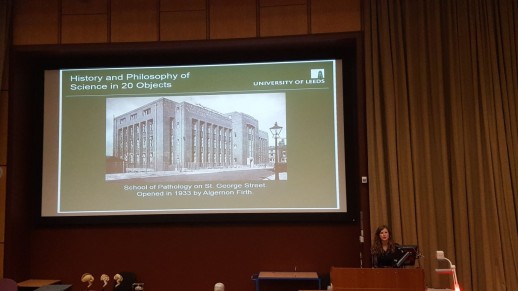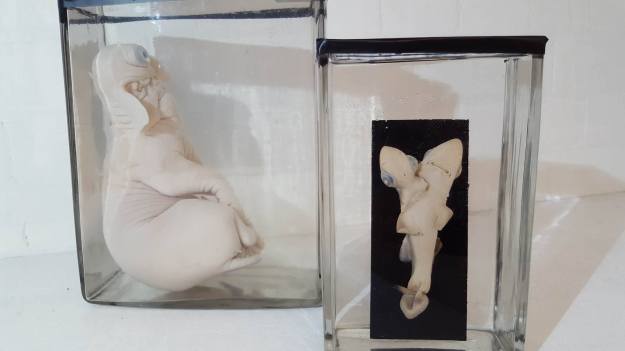The second HPS in 20 Lecture of this academic term has kept to the exceptional standard we have come to expect from this series. Like all of these talks, one central object was used to catalyse a discussion that ended up being extremely wide-ranging; taking us to considerations of the very nature of our being. However, the lecture began with PhD researcher and museum expert Laura Sellers explaining how the museum had come into possession of what initially seemed to be a rather ordinary looking Knife. Rather like the ones my Gran used to keep. However, this was in fact a knife used for dissecting the brains of the dead. Laura pointed out that it had been designed with a small horn handle and a disproportionately long blade in order that its users could wield it with the requisite delicacy for long cutting strokes through soft tissue. And who were these delicate users? Most likely, they were teachers and researchers working in Pathology at Leeds in the Algernon Firth Institute or Thoresby Place.
School of Pathology on St. George Street opened in 1933 by Algernon Firth
We were then shown images of the places and contexts in which these tools would have been used, leading up to the site of the current Medical School in the ‘concrete extravaganza’ that is the Worsley Building. I had just the week before started working in administration in the medical school and delighted at telling my new colleagues the next day that the Medical School had just had its 850th birthday on the 25th of October. Turns out I had misheard this and it was actually 185 years old. They were either too polite or too sorry for me to point out my ridiculous error. Luckily there was nothing ridiculous in the main body of the lecture, which was given by Marie Curie Fellow Dr Sean Dyde.
Van Aeken, Cure of Folly or the Extraction of the Stone of Madness, 1485
Sean began his discussion of the brain knife by giving some context about why people have traditionally cut into brains and indeed into skulls, and pointed out that the notion of the mind being connected to the brain isn’t actually an especially Western idea. He then moved onto explain how he would situate the mind brain dichotomy in a particular discussion of the Age of Enlightenment, that is, the eighteenth century. Sean was clearly passionate about this subject matter and he really came into his own here, with some really lovely turns of phrase used to describe this period: ‘an Age of Improvement, an Age of Refinement, an Age of absolute monarchs, an Age of Enlightenment. A time of new wealth, paper money, stock bubbles and market crashes; Greco-Roman architecture, English gardens and Gin Lanes.’
At this point, perhaps predictably, but clearly necessarily, Descartes came in. It would be bizarre indeed to describe conceptions of the mind in the 17th and 18th century without resource to the Cartesian method. However, Sean did not relate the brain knife to philosophy in isolation; he took us on a fast paced tour of literature, politics, drugs, and science.
The Nightmare by Henry Fuseli
Sean was able to condense a great deal of complicated ideas into an entertaining and provocative lecture, which I found thoroughly enjoyable. My favourite parts probably centre round his discussion of Tristram Shandy (a book I have not read, but now intend to) and his ideas about the relationship of the romantics to God, art, and opium. The link between nineteenth century phrenology and a recent paper in the journal Nature, in which its authors highlighted 360 localised areas of the brain, provoked the most questions from the audience. There was in fact so much in the lecture that I’m really struggling to provide a succinct summary of the diverse areas it touched upon. Of course it was a subject area that I am well familiar with, but my friend Amy (a physiology researcher) said that she had loved learning about medicine in such a different way. It should not only be recommended for its variety, but also for the elegant prose Sean used throughout. I suppose what I want to get across is how interesting and entertaining this was, and highly recommend that anyone reading this should also watch the recording below.
As always though, these lectures are best experienced live, and the selection of objects on display at this one was particularly fascinating (or particularly disgusting depending on your sensibilities). A preserved sheep’s brain and wax models of embryonic development of the brain were used to good effect to illustrate points in the lecture, and we were invited to take a closer look at the end. On Tuesday the 22nd of November we are going to be treated to an Anthrax ridden finger floating in a jar, and I, for one, cannot wait.






